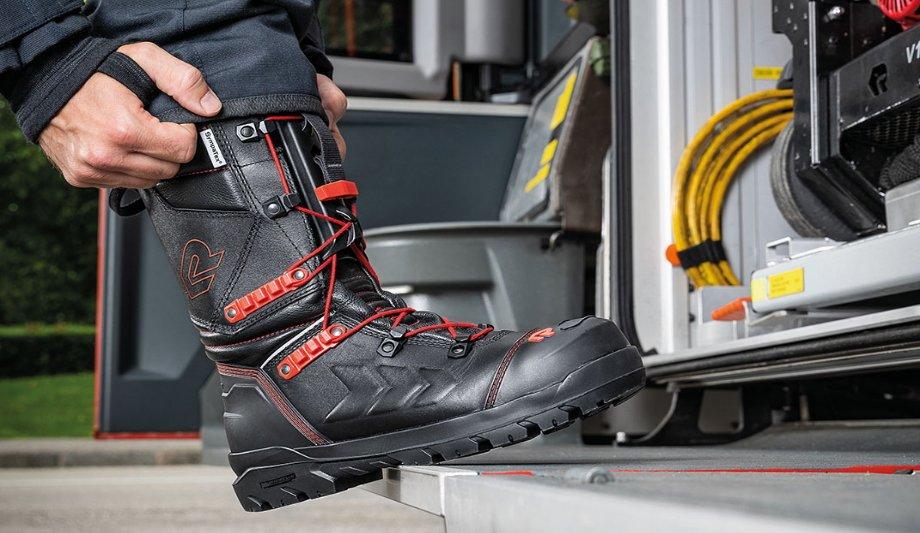Fastener Process
One of the first tasks, and also quite the most challenging, was the fastener and adjustment system. On the one hand, the boot must fit each foot perfectly and, on the other, it must be possible to tighten it in the shortest possible time. To achieve this, it was necessary to separate the adjustment process from the fastening process.
The boot is adjusted to the emergency crewperson’s foot once during a brief period of inactivity using the red adjustment hooks
Rosenbauer developed a variety of concepts, but relatively quickly came to the conclusion that one of them was really brilliant. Namely, today’s quick-release device system of the BOROS B4.
The development and tests took several years, but the work paid off: The boot is adjusted to the emergency crewperson’s foot once during a brief period of inactivity using the red adjustment hooks on the side of the boot.
Adjustment Process
The system is really simple. If you want the boot tighter, choose a hook position further back, if you want the boot wider, choose a hook position further forward. This adjustment can be made separately for the forefoot (lower zone) and shaft (upper zone).
If the adjustment range via the hooks is not sufficient, which is very rare, simply insert a longer or shorter shoelace. Once adjusted, putting them on and taking them off in the field is particularly quick and easy: slip them on, pull up the drawstrings until they lock in place and you’re ready to go. Of course, the system also works with operational trousers on.
Design and wear
Rosenbauer had the highest demands in terms of wear comfort which concerns the weight, fit, and mobility Once the concept of the quick-release device system had been worked out, the detailed construction of the boot continued. Rosenbauer had the highest demands here, in terms of wear comfort, which roughly speaking concerns the weight, fit, and mobility of the boot. The fact that the boot had to meet the protection requirements for the fire service was of course a basic prerequisite.
- Weight: The unbelievably light weight of only 2.6 kg/pair in size 43 was achieved through a perfectly coordinated material composition. Here, the sole in particular, as the heaviest single part, was a great challenge.
- Fit: No two feet are alike. This is quite a challenge, but the shoe technicians, with their decades of experience, were able to solve it with a newly developed last. The new inner contour, in combination with the high adaptability of the quick-release device system, ensures that the boot can be optimally adapted to the foot.
- Mobility: Crawling, walking, running, jumping and steering vehicles are just a few of the movement patterns in which the boot is designed to support the emergency crews. For this purpose, we have integrated a 360° flex zone at ankle height. On the one hand, this stabilizes the foot and on the other, it offers the necessary flexibility.
